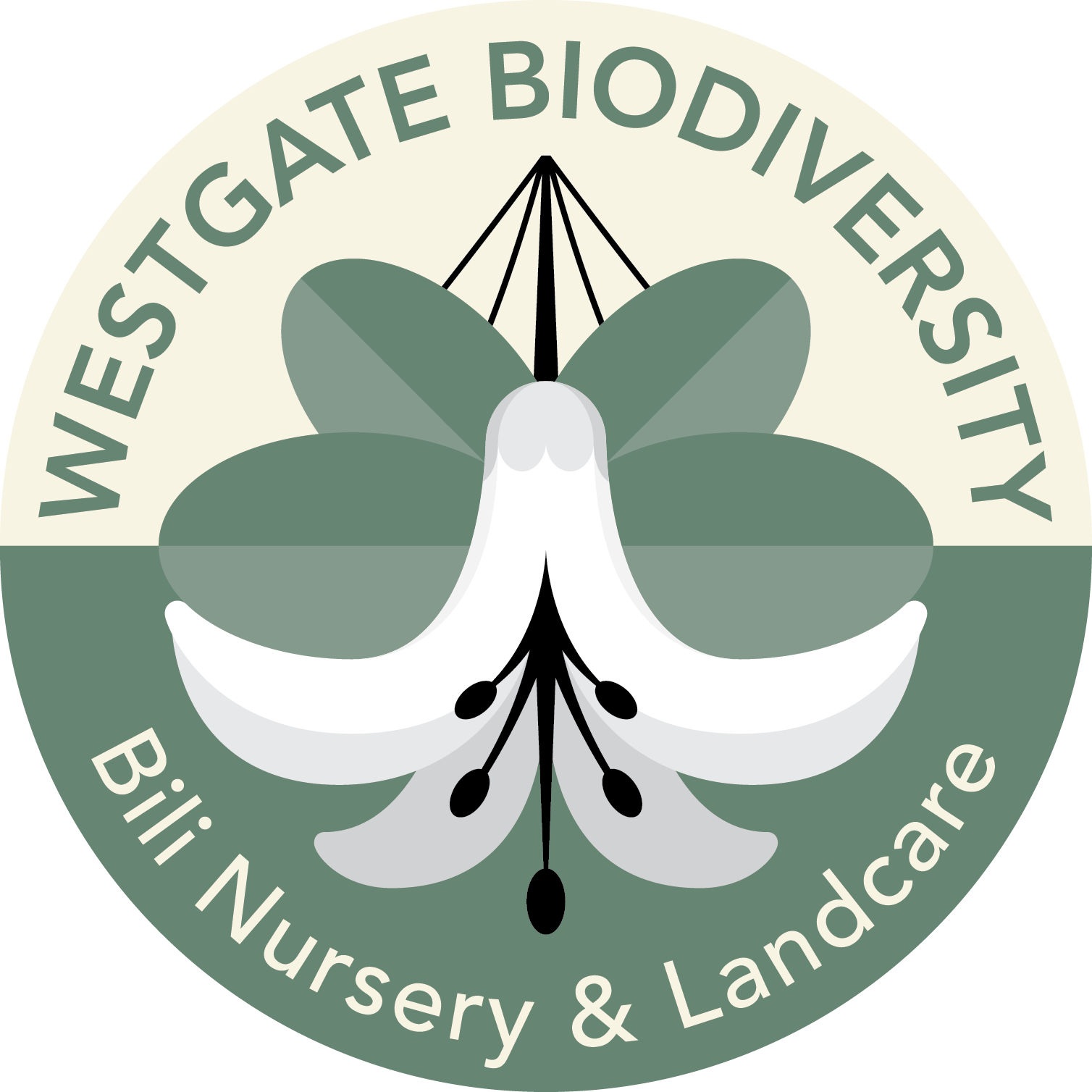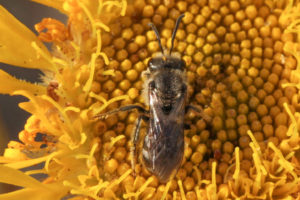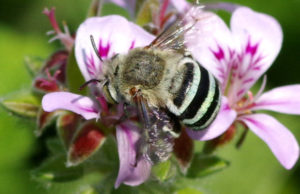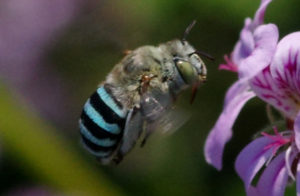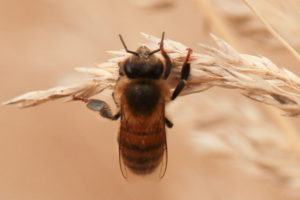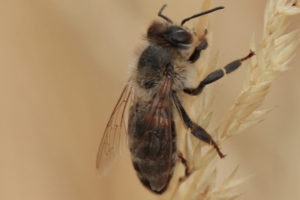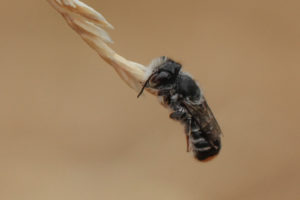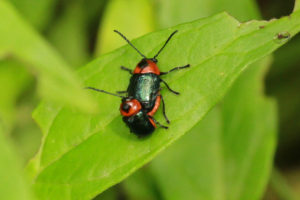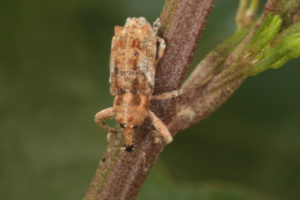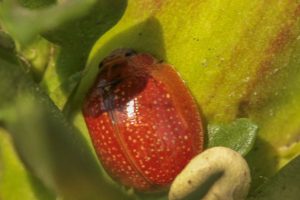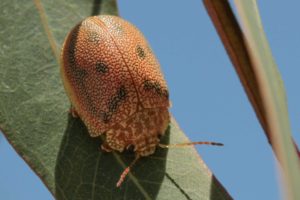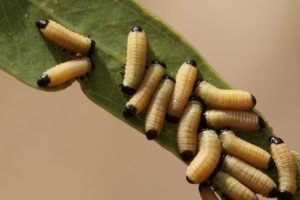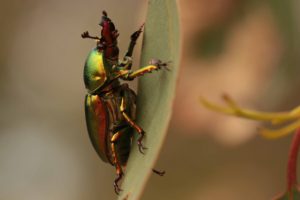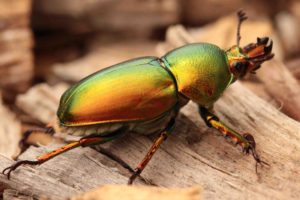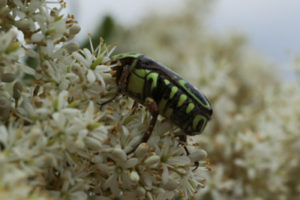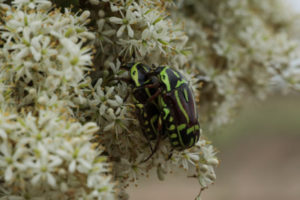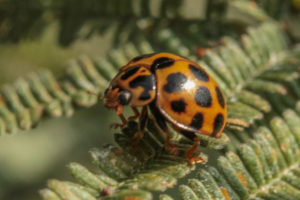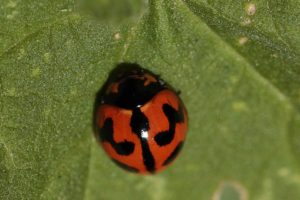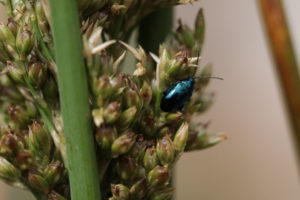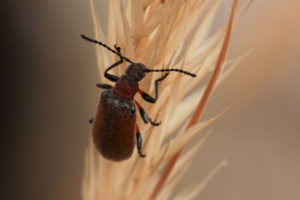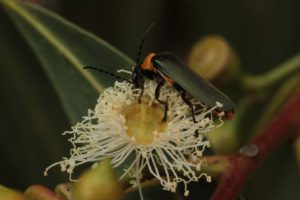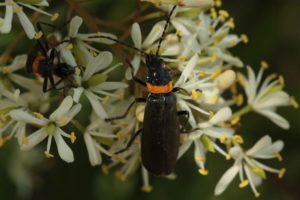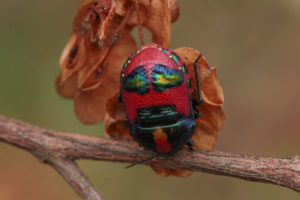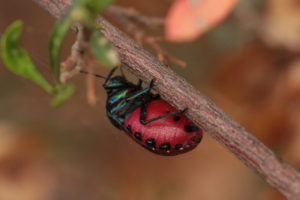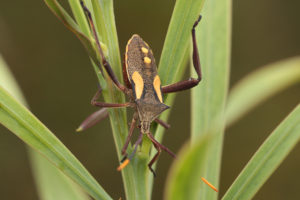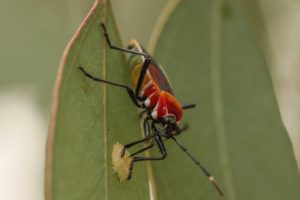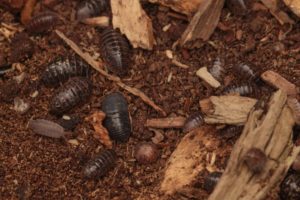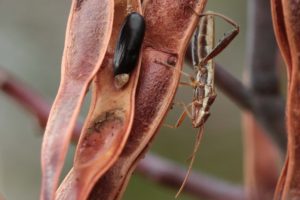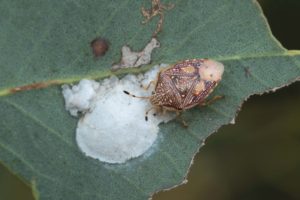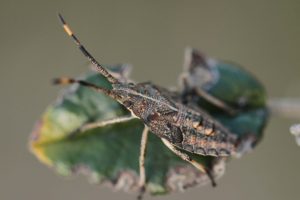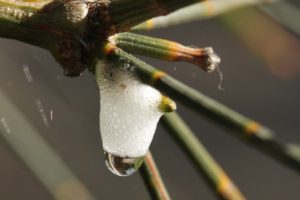Bees, beetles & bugs
Bees
Australia is dominated by the introduced European Honey Bee but there are over 1,500 species of native bees, widely diverse in colour and form. Most are solitary, making individual nests for their eggs in burrows in the ground or tree hollows. These bees can sting but are non-agressive. The 10 species that are social store small amounts of honey and have no sting. Bees are entirely dependent on flowers for their protein and carbohydrates and native bees are important pollinators of indigenous flora.
Alkaline or Native Sweat Bee – Lasioglossum spp. Like most native bees these are solitary but they dig communal burrows in clay soils. They are attracted to sweat and feed on native and exotic flowers.
Blue banded Bee – Amegilla sp. is a beautiful and widespread native bee with bright turquoise bands across its abdomen (5 for males, 4 for females), lots of fluffy hair and large green eyes. Females build their own mud nest. Unlike Honey Bees and other native species ‘buzz pollinate’ – a flower ‘shivering’ motion that releases pollen held in small capsules and is necessary for a few native plants such as Hibbertia and very good for many crops.
Honey Bee – Apis mellifera This is one of three species to have been domesticated and is an important pollinator. It is the only bee species to leave its sting behind after it has injected.
Leaf-Clutter Bee – Megachile sp. male This solitary bee is so called because the female typically snips neat round or oval shapes from leafs to create cells although some use resin for this purpose. Cells are constructed inside nests that have usually been burrowed into cavities like holes in stems of abandoned holes in wood. Eggs are laid in these cells, and each provided with a pollen and nectar mixture and the grubs will eat these provisions before pupating. The pollen collected by these bees is carried on long hairs on the abdomen where it more readily transfers to the next blossom making these bees productive pollinators. This male is probably Megachile tosticauda which roosts on grass stems, generally with other males with abdomens facing outwards.
Beetles
Elephant Beetle – Orthorhinus cylindrirostris has a long rostrum or snout with biting parts at its tip and very hard exoskeletons which usually help with camouflage. They can also jump, bounce or tumble away from predators, roll over and play dead.
Eucalyptus or Tortoise Leaf Beetle – Paropsis atomaria produce two life cycles during summer. A females can produce 600 eggs and deposits them at the tip of a leaf or twig. The larvae feed on new growth but the adults prefer older leaves. The larvae can release a defensive liquid of hydrogen cyanide and eucalyptus oil if threatened.
Eucalyptus Leaf Beetle – Paropsisterna sp. There are around 100 species of the genus Paropsisterna and they feed mainly on eucalyptus but also Calistemon, Kunzel, Leptospermum and Melaleuca.
Fiddler or Horseshoe Beetle – Eupoecila australasiae The name ‘Fiddler’ comes from the green violin-shaped markings on the back of this beetle. It is common, large – up to 2cm – and native to south east Australia. It emerges from cocoons underground in early summer and feeds primarily on pollen. The grubs feed on rotting wood.
Golden Green Stag Beetle – Lamprimalatreillii The name ‘Stag Beetle’ comes from the prominent antler-like mandibles which are probably used in battles with rival males or in courtship. These splendid-looking, metallic coloured beetles feed during the day on eucalypt and acacia foliage.
Common Spotted Ladybird – Harmonia conforms Ladybirds are small with a body length of 10mm-12mm, distinguished by their brightly colours and spots or stripes. They prey on aphids, scale insects and mites. A single ladybird larva can eat up to 100 aphids in a day! Here it is likely to be feeding on tiny white scale insects on an acacia.
Transverse Ladybird – Cocienellus transversals The Transverse Ladybird is just 5mm and Australia’s most common ladybird beetle.
Leaf Beetle – family Chrysomelidae There are around 2,000 Australian species of leaf beetles, generally small (5-15mm in length), antennae ~1/3rd of body length and often colourful. They feed on living plant material.
Long-jointed Bark Beetle – Ecnolagria rufescens Adults and larvae of beetles in this Tenebrionidae Family principally on dead plant and fungal material and are found in most habitats.
Plague Soldier Beetle – Chauliognathus lugubres Soldier beetles are native to Australia and found in temperate southeastern areas. They occasionally build up to massive numbers. The adults are soft-bodied and their diet appears to be largely nectar from flowering shrubs and trees. The larvae eat other small insects. Soldier Beetles can exude a white viscous fluid from their glands that deters would-be predators. They also secrete the same chemical in a wax form to protect their eggs against infection.
Bugs
Crusader bug – Mictis profana is a large bug (20-30cm in length as adults) and has an elongated snout and large rear legs. These bugs are strong predators and their bite can be painful.
Harlequin bug – Dindymus versicolor feeds on a wide range of native plants including flowers ands fruits. They overwinter under bark.
Pill Bug – Armadillidium vulgare is a European isopod now found worldwide and feeds on rotting organic matter, helping to cycle nutrients through the food web. Reproductive females develop a fluid-filled ‘brood pouch’ in the breeding season for fertilised eggs and the young crawl out of this pouch when they are fully developed. (They are in fact crustaceans, not insects.)
Pod-sucking Bug – Riptortus serripes Regarded as a pest by agriculture, this Pod-sucking Bug or Large Brown Bean Bug is native to Australia and distinguished by its yellow stripe along each side of its body. The adults are good flyers and feed on a wide variety of seeds with a preference for acacia. The four stages of instars resemble ants giving them some protection from predators.
Red Jewel Bug – Choerocoris paganus A group of these brightly coloured native bugs were observed on Dodonea viscosa– Sticky Hop Bush. The seed, which is maturing in the Park (Jan), appears to be the bug’s main source of food.
Shield or Stink Bug – Poecilometis feeds through a long tubular mouth with a sharp rostrum for piercing plants. Some are predatory and use their rostrum to spear prey and extract body fluids. It is possible that the bug in the first image is piercing the psyllid cover to get at the lerp insect within.
Shield-backed or Jewel Bug – Scutiphora pedicellata called ‘shield-backed’ because of the enlargement of the last section of their thorax into a continuous shield over the abdomen and wings. They feed on plant juices from a variety of species and, like Stink Bugs, omit an offensive odour when disturbed.
Spittle Bug – Pilagra parva nymphs attach themselves to a plant feeding on the sap and consuming so much water and carbohydrates that a liquid is secreted forming bubbles by moving or pumping their bodies. Their hind legs are used to cover themselves with the froth, giving them protection from predators, temperature extremes and dehydration. Eggs are laid in late summer left to overwinter on plant debris. The eggs hatch in early spring, the nymphs are wingless and almost invisible inside the spittle.
